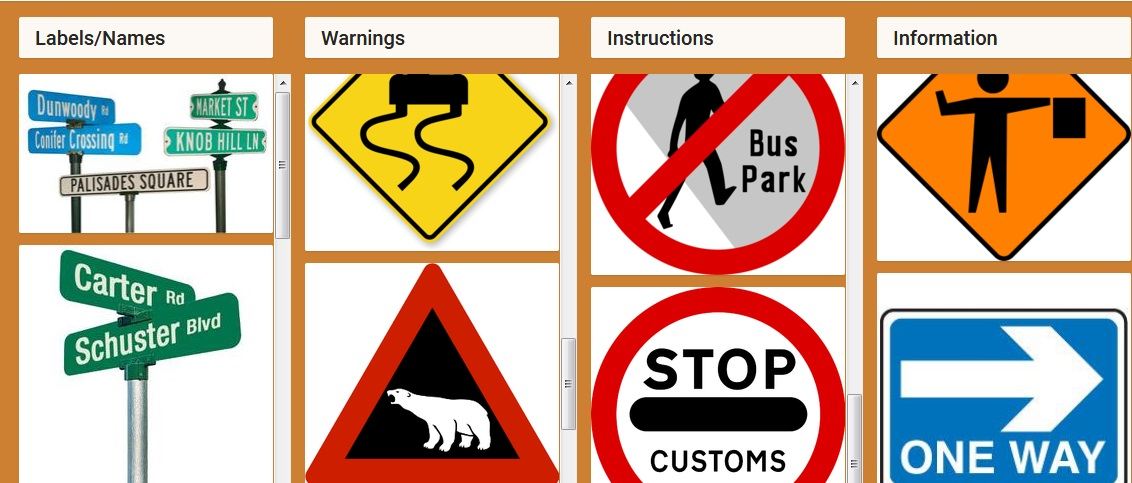I write a lot about the different ways I use inductive teaching and learning with both English Language Learners and English-proficient students (see The Best Resources About Inductive Learning & Teaching). It’s an extremely versatile instructional strategy that promotes higher-order thinking.
Inductive teaching and learning often involves categorizing, and Padlet is a perfect online tool for that purpose.
I’ve previously described in detail how my ELL students used it to learn about food vocabulary (see Web 2.0 Tools For Beginning English Language Learners – “Padlet”).
Today, we began using it as part of our study of “signs” (by the way, the “Shelf” template works best). After doing some preliminary categorization in the classroom where we identified the primary categories of “labels/names; warnings; information; and instructions,” we went to the library and students began to expand their knowledge of signs by searching for Web images and put them on Padlets. Today, I only had four students begin to create them – they’ll teach other students on Tuesday. In addition to creating these categorized “Picture Data Sets,” they will also add a text description explaining the purpose of each sign.
Here’s the beginning of one:
You can see more here on our class blog.
There are lots of ways to use Padlet for this kind of exercise – transportation, for example (public, cars, sea). I think copying and pasting text for “text data sets” are still best in Word or Google Docs because they can be easily printed out and used. But Padlet is great for images.
What are other ways you have used Padlet with ELLs or English-proficient students?





Thank you for this idea! There are so many possibilities to use Padlet for remote language learning!